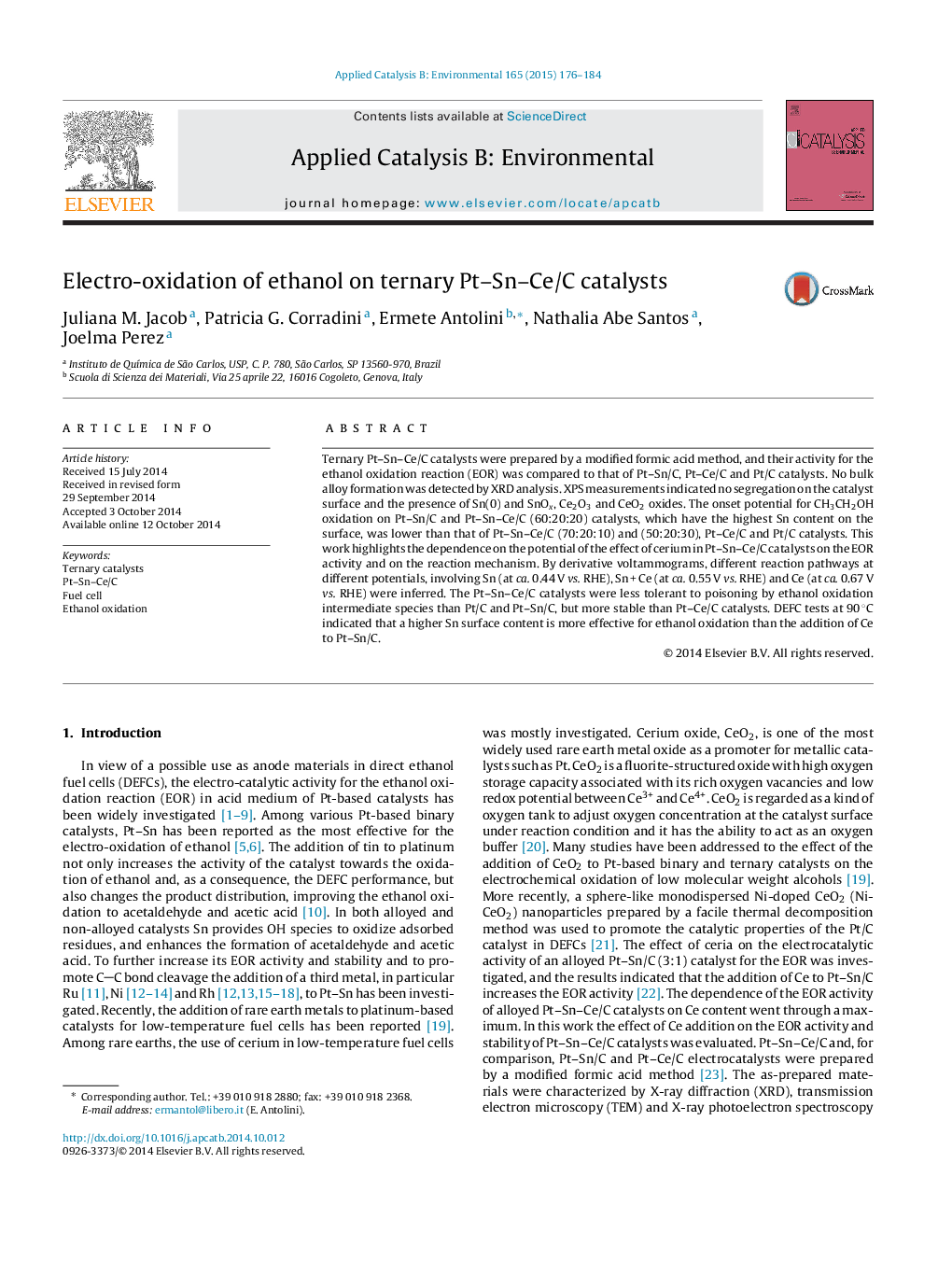| Article ID | Journal | Published Year | Pages | File Type |
|---|---|---|---|---|
| 45547 | Applied Catalysis B: Environmental | 2015 | 9 Pages |
•Carbon supported Pt–Sn–Ce catalysts were prepared by a modified formic acid method.•The EOR onset potential decreased with increasing Sn content on catalyst surface.•The effect of Ce on the EOR activity of PtSnCe/C catalysts depended on the potential.•PtSnCe/C catalysts were more poisoning tolerant than the Pt–Ce/C catalysts.•PtSnCe/C catalysts were less poisoning tolerant than Pt/C and Pt–Sn/C.
Ternary Pt–Sn–Ce/C catalysts were prepared by a modified formic acid method, and their activity for the ethanol oxidation reaction (EOR) was compared to that of Pt–Sn/C, Pt–Ce/C and Pt/C catalysts. No bulk alloy formation was detected by XRD analysis. XPS measurements indicated no segregation on the catalyst surface and the presence of Sn(0) and SnOx, Ce2O3 and CeO2 oxides. The onset potential for CH3CH2OH oxidation on Pt–Sn/C and Pt–Sn–Ce/C (60:20:20) catalysts, which have the highest Sn content on the surface, was lower than that of Pt–Sn–Ce/C (70:20:10) and (50:20:30), Pt–Ce/C and Pt/C catalysts. This work highlights the dependence on the potential of the effect of cerium in Pt–Sn–Ce/C catalysts on the EOR activity and on the reaction mechanism. By derivative voltammograms, different reaction pathways at different potentials, involving Sn (at ca. 0.44 V vs. RHE), Sn + Ce (at ca. 0.55 V vs. RHE) and Ce (at ca. 0.67 V vs. RHE) were inferred. The Pt–Sn–Ce/C catalysts were less tolerant to poisoning by ethanol oxidation intermediate species than Pt/C and Pt–Sn/C, but more stable than Pt–Ce/C catalysts. DEFC tests at 90 °C indicated that a higher Sn surface content is more effective for ethanol oxidation than the addition of Ce to Pt–Sn/C.
Graphical abstractFigure optionsDownload full-size imageDownload as PowerPoint slide
